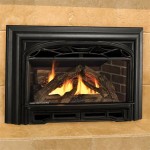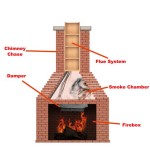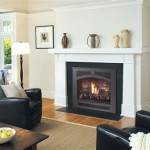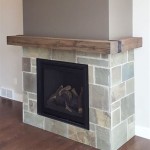The Vital Role of Fireplace and Chimney Professionals
Maintaining a fireplace and chimney involves more than just occasional use. Consistent upkeep and professional assessment are essential for ensuring the safe and efficient operation of these home components. Fireplace and chimney professionals possess specialized knowledge and skills to address various aspects of fireplace and chimney care, ranging from routine cleaning to complex repairs and installations.
Properly functioning fireplaces and chimneys contribute significantly to a home's heating efficiency and overall safety. Issues like creosote buildup, structural damage, and ventilation problems can pose serious risks, highlighting the importance of engaging qualified professionals. This article aims to provide a comprehensive overview of the services provided by fireplace and chimney professionals, covering key areas such as inspection, cleaning, repair, and installation.
Comprehensive Chimney Inspections: A Foundation for Safety
Chimney inspections are a critical component of fireplace and chimney maintenance. These inspections are designed to identify potential hazards and structural deficiencies that might compromise the system's performance or safety. Different levels of inspection cater to varying needs and situations.
A Level 1 inspection is a basic visual assessment conducted by a chimney sweep or qualified professional. It typically involves examining the readily accessible portions of the chimney and fireplace, including the flue, firebox, and surrounding masonry. The inspector looks for signs of creosote buildup, obstructions, and structural damage. This level of inspection is generally recommended annually for fireplaces and chimneys that are used regularly and have not undergone significant changes.
Level 2 inspections are more comprehensive and are required under specific circumstances. These situations include the sale or transfer of a property, changes to the fuel type or appliance connected to the chimney, or after a chimney fire or other significant event. A Level 2 inspection includes everything in a Level 1 inspection, as well as a visual examination of accessible portions of the chimney interior using specialized equipment such as a camera. This allows the inspector to identify hidden issues such as cracks, deterioration of the flue liner, and other potential problems that might not be visible during a basic inspection.
Level 3 inspections are the most detailed and are typically reserved for situations where serious problems are suspected or have been identified during a Level 1 or Level 2 inspection. This type of inspection may involve the removal of portions of the chimney structure to gain access to concealed areas. Level 3 inspections require specialized expertise and are often performed by experienced chimney technicians or engineers. They are often necessary to accurately assess the extent of damage and develop an appropriate repair plan.
Regardless of the level of inspection, it’s crucial to engage with certified chimney professionals. Certifications from organizations like the Chimney Safety Institute of America (CSIA) provide assurance that the inspector has undergone rigorous training and possesses the necessary knowledge and skills to conduct thorough and accurate inspections.
Efficient Chimney Cleaning: Removing Creosote and Obstructions
Chimney cleaning is an essential maintenance task that helps prevent chimney fires and ensures proper ventilation. Creosote, a highly flammable byproduct of burning wood, accumulates inside the chimney flue as smoke and gases cool. Over time, this buildup can become thick and hardened, creating a significant fire hazard. Regular chimney cleaning removes creosote and other debris, reducing the risk of chimney fires and improving the efficiency of the fireplace.
The frequency of chimney cleaning depends on several factors, including the type of fuel burned, the frequency of use, and the efficiency of the appliance. Generally, it is recommended to have your chimney inspected and cleaned at least once a year, even if you don't use your fireplace frequently. If you burn wood regularly, especially unseasoned or softwood, you may need to clean your chimney more often.
Chimney cleaning is typically performed by a trained professional using specialized brushes and equipment. The chimney sweep will assess the condition of the chimney, identify any potential problems, and then use appropriate methods to remove creosote and other debris. This process often involves brushing the interior of the flue to dislodge buildup, followed by vacuuming to remove the loosened material. A thorough cleaning ensures that the flue is free of obstructions and that the fireplace can vent properly.
In addition to creosote removal, chimney cleaning also addresses other potential obstructions, such as bird nests, leaves, and other debris. These obstructions can block the flow of smoke and gases, leading to carbon monoxide poisoning or other dangerous situations. Removing these obstructions is an important part of ensuring the safe and efficient operation of the fireplace and chimney.
The use of the correct tools and techniques is critical for effective chimney cleaning. Professionals are trained to handle different types of chimneys and appliances, and they understand the importance of using appropriate methods to avoid damaging the chimney structure. Attempting to clean a chimney without the proper knowledge and equipment can be dangerous and may result in further damage.
Expert Chimney Repair and Restoration: Addressing Structural Issues
Chimney repair and restoration are crucial for maintaining the structural integrity and safety of the chimney. Over time, chimneys can be exposed to the elements, leading to deterioration of the masonry, cracks in the flue liner, and other structural problems. These issues can compromise the chimney's ability to vent properly and may even pose a safety hazard.
Common chimney repair needs include addressing spalling brick, cracked or missing mortar joints, and damaged flue liners. Spalling brick occurs when moisture penetrates the brick and then freezes, causing the surface to flake or crumble. Cracked or missing mortar joints can allow water to seep into the chimney structure, leading to further damage and weakening the chimney's stability. Damaged flue liners can compromise the chimney's ability to contain and vent exhaust gases, increasing the risk of carbon monoxide poisoning and chimney fires.
Professional chimney repair services address these issues using a variety of techniques and materials. Spalling brick can be repaired by replacing damaged bricks and applying a sealant to protect the masonry from further water damage. Cracked or missing mortar joints can be repaired using a process called tuckpointing, which involves removing the old mortar and replacing it with new mortar that matches the original in color and composition. Damaged flue liners can be repaired or replaced using various methods, including installing a new stainless steel liner or applying a heat-resistant coating to the existing liner.
Chimney restoration involves more extensive repairs and may be necessary for older chimneys that have suffered significant damage. This can include rebuilding portions of the chimney, repairing or replacing the chimney crown, and addressing structural issues that affect the chimney's stability. Chimney crowns are the concrete slabs at the top of the chimney that protect the masonry from water damage. Cracks or deterioration in the chimney crown can allow water to seep into the chimney structure, leading to further damage. Rebuilding the chimney crown or applying a sealant can help prevent water damage and prolong the life of the chimney.
When selecting a chimney repair or restoration company, it’s important to choose a contractor with experience and expertise in this area. Look for companies that are licensed and insured, and that have a proven track record of providing high-quality workmanship. Obtaining multiple quotes and reviewing references can help ensure that you are selecting a reputable and qualified contractor.
Addressing chimney repairs promptly can prevent minor issues from escalating into more serious and costly problems. Regular inspections and maintenance can help identify potential problems early on, allowing for timely repairs that can prolong the life of the chimney and ensure the safety of your home.
Professionals also ensure that repairs adhere to local building codes and safety regulations. This is crucial for maintaining the integrity and safety of the structure.
Safe Fireplace & Chimney Installation: Ensuring Proper Function
The proper installation of a fireplace and chimney is paramount for safety and efficiency. Incorrect installation can lead to a range of problems, including poor ventilation, smoke leaks, carbon monoxide poisoning, and even fires. Engaging with experienced and qualified professionals is essential for ensuring that the installation process is carried out correctly and in accordance with all applicable codes and regulations.
The installation process typically begins with a thorough assessment of the site to determine the appropriate type of fireplace and chimney system for the home. Factors to consider include the size of the room, the desired heating capacity, and the existing structure of the home. Professionals can help homeowners select the right type of fireplace and chimney system based on their individual needs and preferences.
Different types of fireplaces and chimney systems are available, each with its own set of advantages and disadvantages. Wood-burning fireplaces are a traditional option that provides a natural source of heat and ambiance. However, they require a dedicated chimney and regular maintenance. Gas fireplaces offer convenience and ease of use, as they can be turned on and off with the flick of a switch. Electric fireplaces are another option that requires no venting and can be installed in virtually any room. The choice of fireplace depends on factors like heating needs, aesthetic preferences, and budget.
The installation of a chimney involves several critical steps, including ensuring proper flue sizing, installing the correct type of liner, and providing adequate clearances from combustible materials. The flue size must be properly matched to the fireplace to ensure efficient venting and prevent smoke leaks. The liner protects the chimney structure from corrosive byproducts of combustion and helps prevent carbon monoxide from entering the home. Adequate clearances from combustible materials are essential for preventing fires.
Professionals follow strict guidelines and best practices during the installation process to ensure that all safety requirements are met. This includes properly connecting the fireplace to the chimney, sealing any gaps or cracks, and testing the system to ensure that it is functioning correctly. A final inspection is often required by local building officials to verify that the installation is in compliance with all applicable codes and regulations.
Furthermore, professionals can advise on the placement of smoke detectors and carbon monoxide detectors, which are crucial for early detection of any issues. They can also provide guidance on safe operating procedures and maintenance practices to ensure the long-term performance and safety of the fireplace and chimney system.

Fireplace And Chimney Professionals Sweep Repairs S

Fireplace And Chimney Professionals Sweep Repairs S

Fireplace And Chimney Professionals 18 Photos 4345 Durham Rd Kintnersville Pennsylvania Services Phone Number Yelp

How To Prepare Your Home For A Professional Chimney Sweep

Chimney Sweep Cleaning Wethersfield Glastonbury Hebron Farmington

Westminster Chimney Sweep Fireplace Repairs

Services Fireplace And Chimney Professionals

Pros And Cons Of Chimney Cleaning Logs

Chimney Sweeps Appointments Professionals

Fireplace And Chimney Professionals 18 Photos 4345 Durham Rd Kintnersville Pennsylvania Services Phone Number Yelp
Related Posts








